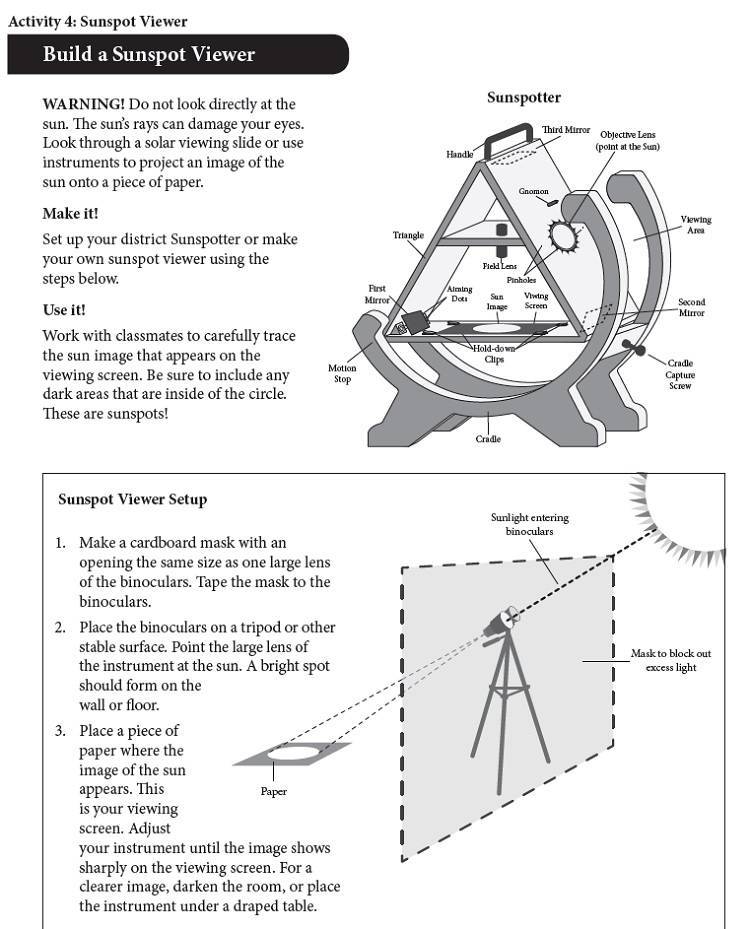Sunspotter
Warning: Never look directly at the sun. It can seriously hurt your eyes.
The Sunspotter uses lenses and mirrors to show a projection of the sun’s image so you can safely look at the sun. It gives students the chance to gather data about the sun like scientists have throughout the centuries. Students can predict how the sun will look, observe how sunspots change over time, and draw their observations. Track sunspots as a class and learn how scientists who study the aurora use solar flares to predict the northern lights.
- Observe the sun over time like Galileo did! Set up your sunspot viewer or grab your pinhole viewer and make a daily sketch of the face of the sun. You can use this sun map grid sheet to help place the sunspots. Make sure to record the date and time.
- This activity from Cultural Connections goes with the Sunspotter and can be used with either viewer.
- Here are prompts to use with the Sunspotter.
If you are in the Fairbanks area the Sunspotter can be borrowed from the UA Museum of the North here and includes a booklet of activity ideas.
You can also learn to build one yourself! Watch this video from Boy's Life Magazine on how to make a shoebox pinhole viewer. This pinhole viewer is a personal viewer only one person can look through at one time.
The larger sunspot viewer might be a better option for a group to sit around the screen and draw their observations. You can build a sunspot viewer for your group with a pair of binoculars and cardboard. Watch the video from the Geophysical Institute that goes with the instructional diagram below.

Image credit: Cultural Connections Kit, Middle School Guide.

This project was funded under NASA cooperative agreement NNX16AL65A and cooperative agreement number NNH15ZDA004C. Any opinions, findings, and conclusions or recommendations expressed in this material are those of the author(s) and do not necessarily reflect the views of the National Aeronautics and Space Administration.
